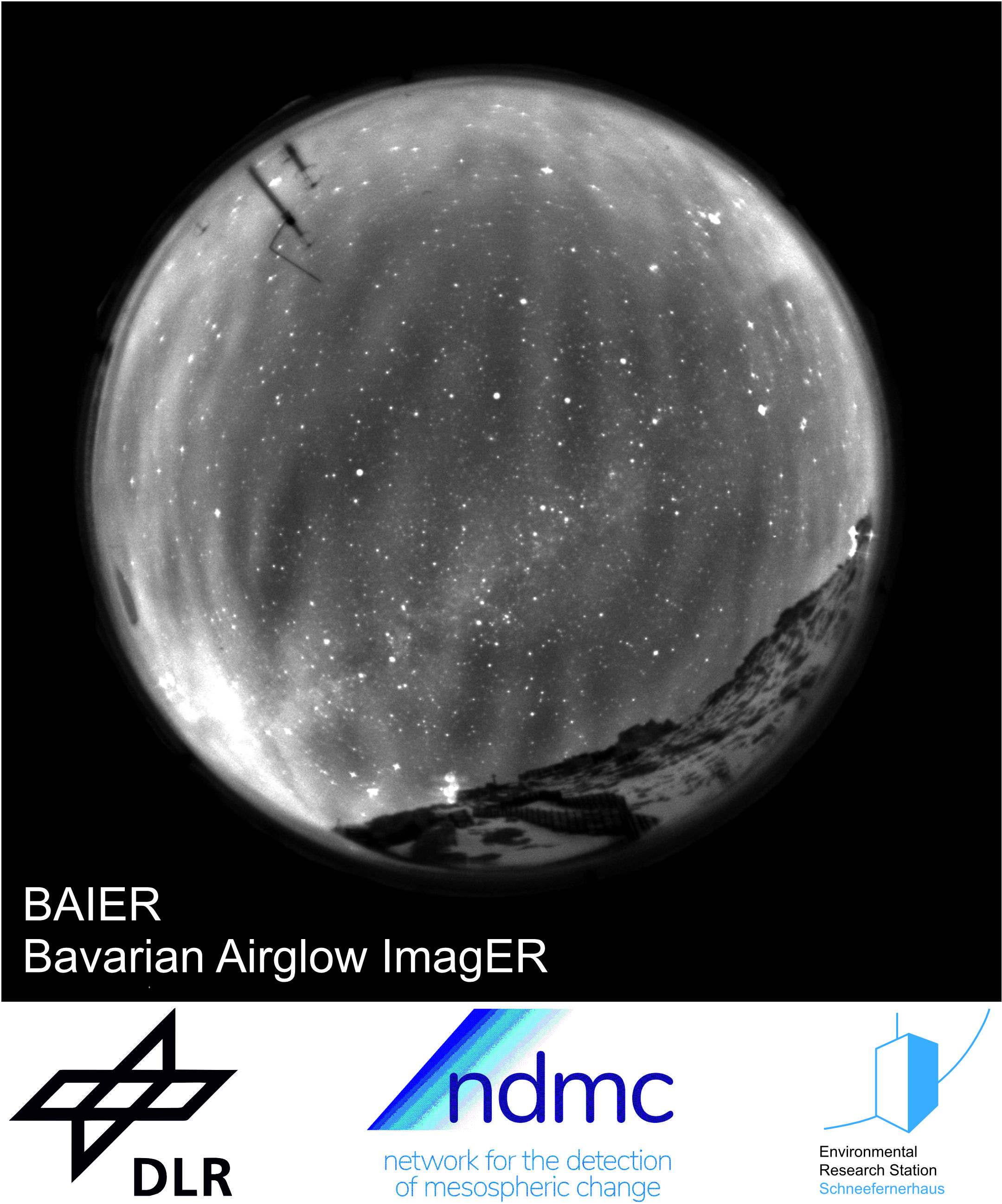

The German Aerospace Center (DLR) is Germany´s national research center for aeronautics and space. Its extensive research and development activities in aeronautics, space, energy, transport and security are integrated into national and international cooperations. Additionally to its own research focus, the DLR is a space agency and responsible for the planning and the implementation of the German space programe by the German federal government.
NDMC is a global program with the mission to promote international cooperation amongst research groups investigating the mesopause region (80-100 km), with the goal of early identification of changing climate signals. This program involves the coordinated study of atmospheric variability at all time scales, the exchange of existing know-how, and the coordinated development of improved observation, analysis techniques and modeling. The initial emphasis is on mesopause region airglow techniques utilizing the existing ground-based and satellite measurement capabilities. NDMC is coordinated by DLR-DFD in cooperation with the UFS.

The airglow imager instrument BAIER observes the so-called airglow (or nightglow) emission in the middle atmosphere since 2013 almost every night. Airglow is a collective term for emissions due to chemical processes in the middle atmosphere which form (mostly) narrow layers. Many of these emissions are very faint in the visible and can be observed best in the near infrared spectral range. BAIER specifically observes the airglow emissions due to the O2 molecules at 865 nm which comes from an altitude of about 94 km and due to the OH molecule between 715nm and 930 nm which comes from about 87km altitude. The observations of the airglow emissions allow to investigate atmospheric dynamics in the middle atmosphere which is mainly characterized by gravity waves, because the chemical reactions taking place are influenced e.g. by the temperature and pressure changes induced by the gravity waves passing through these emission layers. Gravity waves influence the atmosphere in various ways. On small scales they can lead to local occurrences of turbulence while on global scale they influence weather and climate by distributing energy and momentum in the atmosphere and drive global circulations like the jet streams. Knowledge about the gravity waves especially in the height region of the airglow layers which are used to be able to investigate the gravity waves is important for more precise climate and weather models.

The GRIPS (Ground-based Infrared P-branch Spectrometer) instrument routinely measures the temperature in ~87 km altitude with high temporal resolution and precision. The temperatures are used for an early identification of changing climate signals and for the detection of atmospheric gravity waves and infrasound. The latter ones are generated by storm systems, volcanic activity and even tsunamis, and may be used for the rapid detection of natural hazards. Therefore, a deeper understanding of the propagation of these signals through the atmosphere is needed. This is modelled using the HARPA/DLR model.
Multi-axis differential optical absorption spectroscopy (MAX-DOAS) is used to measure stratospheric and tropospheric trace gases including Ozone, NO2, SO2, Formaldehyde, HONO and aerosols. The MAX-DOAS instrument is operated in cooperation with the DWD at the UFS. The DLR-IMF is responsible for the retrieval of trace gas concentrations from slant column densities measured in scattered solar light.

Precipitation is dependent on the microphysical properties of the clouds. The doppler cloud radar installed at the UFS detects the backscatter signal produced by different hydrometeor types like cloud droplets, drizzle, rain drops, ice particles and snow. These data can help to understand the generation of precipitation and may also be used to validate satellite measurements.
MIRA-36 Cloud Radar at Schneefernerhaus
DLR Micro Rain Radar MRR-2 and Parsivel Disdrometer at Schneefernerhaus